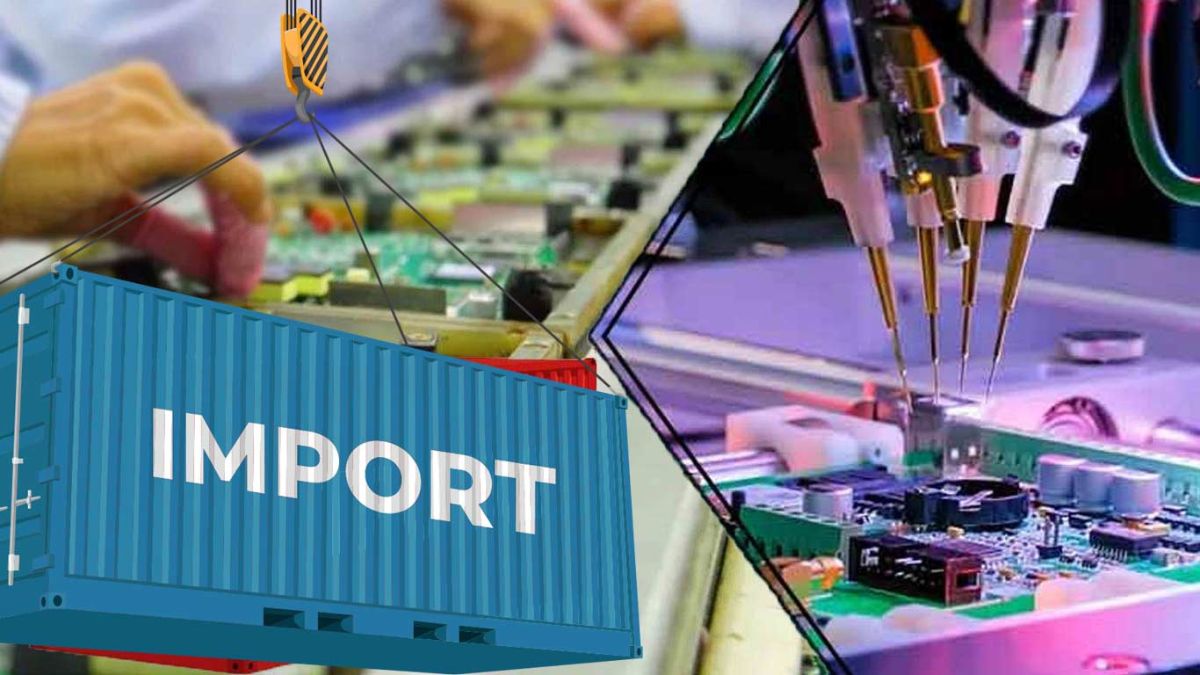Importing electronics into Pakistan can be a profitable venture in 2025—but it requires compliance with customs laws, tax obligations, and documentation procedures. Whether you’re importing laptops, mobile phones, LED TVs, or home appliances, this guide will walk you through each essential step to import electronics in Pakistan legally and efficiently.
Step 1: Get Registered with FBR
Before you begin importing electronics, you must:
- Obtain an NTN (National Tax Number)
- Register with FBR (Federal Board of Revenue)
- Get an Import Registration Certificate (IRC)
- If you’re a company, you must also have your business registered with SECP
Hiring a licensed clearing agent is highly recommended for smoother import procedures.
Read More: Pakistan Mobile Imports Drop 36% in May 2025
Step 2: Determine the HS Code for Electronics
Every product has a unique Harmonized System (HS) code used by Pakistan Customs to calculate duties and taxes. The correct HS code ensures proper classification and prevents overcharging.
Examples:
- Laptops: HS Code 8471.30
- Mobile Phones: HS Code 8517.12
- LED TVs: HS Code 8528.72
Refer to the Pakistan Customs Tariff or consult a clearing agent to confirm your product’s HS code.
Step 3: Understand Import Duties & Taxes
When you import electronics in Pakistan, the following duties and taxes generally apply:
| Tax Type | Rate (Estimated) |
|---|---|
| Customs Duty (CD) | 10–25% |
| Additional Customs Duty (ACD) | 2–7% |
| Regulatory Duty (RD) | 5–20% (varies) |
| Sales Tax (GST) | 17–18% |
| Withholding Tax (WHT) | 5.5% |
Example: For a $500 electronics item:
You may end up paying nearly 45–50% extra in taxes.
Step 4: Prepare the Required Documents
Here are the key documents needed to import electronics:
- Import Declaration Form (IDF)
- Commercial Invoice & Packing List
- Bill of Lading or Air Waybill
- Certificate of Origin (if under a trade agreement)
- Insurance Certificate
- Payment Proof (Letter of Credit or Telegraphic Transfer)
- Import License or Special Permits (if applicable)
Use the Pakistan Single Window (PSW) system to digitally upload these documents for customs clearance.
Step 5: Choose Shipping Method (Air or Sea)
- Air Freight: Ideal for light or high-value electronics. Faster but costlier.
- Sea Freight: Suitable for bulk electronics. Lower cost, longer delivery.
Use proper packaging and tracking for high-value imports.
Step 6: Customs Clearance Process in Pakistan
Once the shipment arrives:
- Customs officials inspect and assess goods.
- Duties and taxes are calculated based on CIF (Cost + Insurance + Freight) value.
- Pay your dues through a designated bank or digital payment gateway.
- Once approved, your goods are released and delivered to your location.
Step 7: Legal Rules for Used Electronics
Pakistan offers relief for used electronics like laptops, CPUs, printers, etc., under Valuation Ruling No. 2000/2025. This reduces the declared value and total taxes.
Note: New or sealed products may not qualify for this ruling.
Step 8: Trade Agreements & Concessions
Pakistan offers reduced import duties if you import from partner countries under:
- D-8 Preferential Trade Agreement (e.g. Malaysia, Turkey)
- China-Pakistan Free Trade Agreement (CPFTA)
- South Asia Free Trade Area (SAFTA)
- EU GSP+ status
You must provide a valid Certificate of Origin to claim these benefits.
Step 9: Items Prohibited or Restricted
You cannot import:
- Banned or counterfeit electronics
- Products without PTA approval (e.g. smartphones without IMEI registration)
- Unauthorized drones, spy cameras, jammers
Double-check with FBR and PTA before finalizing your shipment.
Read More: NA Committee Rejects 18% Tax on Solar Panel Imports
Step 10: Summary Table – Importing Electronics in Pakistan
| Step | Action | Description |
|---|---|---|
| 1 | Register with FBR | Get NTN, IRC, and business registration |
| 2 | Find HS Code | Needed for customs and duty calculation |
| 3 | Calculate Duties & Taxes | Customs Duty, GST, WHT, ACD, RD |
| 4 | Prepare Required Documents | IDF, invoice, B/L, origin, insurance |
| 5 | Select Shipping Mode | Air or sea depending on urgency and cost |
| 6 | Upload via Pakistan Single Window | Required for clearance |
| 7 | Pay Duties & Get Clearance | Based on CIF valuation |
| 8 | Claim Trade Agreement Concessions | If applicable |
| 9 | Verify Import Legality | Avoid banned/restricted items |
| 10 | Receive and Distribute | Goods released after customs approval |
Final Thoughts
To legally and efficiently import electronics in Pakistan, follow the updated customs rules, maintain documentation, and use the Pakistan Single Window (PSW) for streamlined processing. If importing in bulk, consider hiring a registered clearing agent for accurate customs handling. Stay tuned with Bloom Pakistan
For updated tariffs, always check the FBR Customs Tariff portal and new SROs issued in 2025.
Read More: Pakistan Battery Storage Imports to Surge By 600% Till 2030









